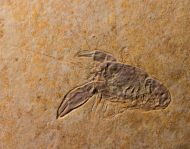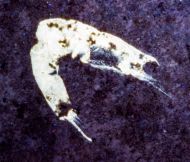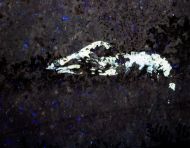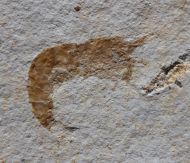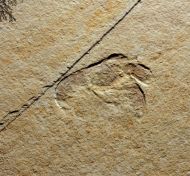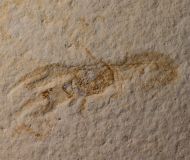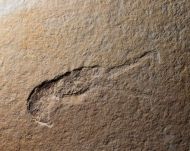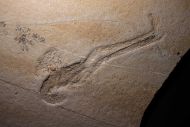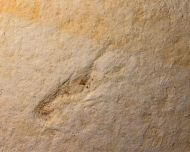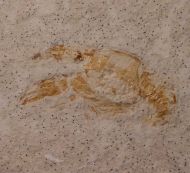Fossils for sale
Crustaceans and other associated taxa from the litographic limestone from Solnhofen, Germany.

Crustaceans from the Solnhofen Limestone
And Other Arthropods
The crustaceans from the Solnhofen Limestone rank among the best preserved fossil Crustacea worldwide. As this deposit represents a Konservat‑Lagerstätte, even the finest bristles on the legs or the segments of the antennae are often preserved in remarkable detail.
With more than 50 genera and probably over 100 species, they display an astonishing diversity.
Overview of Crustacea
| Group | Typical species | Remarks |
|---|---|---|
| Isopods (Isopoda) | Urda rostrata | Rare, small forms, often completely preserved. |
| Mysids / Krill (Mysidoidea) | Elderia ungulata | Delicate forms, only few records. |
| Anomurans (Anomura) | Megachela frickhingeri | Early representatives of modern groups, rare. |
| Mantis shrimps (Stomatopoda) | Sculda pennata | Rare, but with detailed preservation of the claws. |
| Reptant decapods (Reptantia) | Mecochirus longimanatus, Eryma modestiforme | Mecochirus is the most common crustacean; other genera also diverse. |
| Swimming shrimps (Natantia) | Aeger spinipes, Aeger tipularius | Very common, often completely preserved, among the most beautiful fossils. |
| Barnacles (Thoracica) | Archaeolepas redenbacheri | Sessile forms, usually attached to driftwood or other organisms. |
| Crabs (Prosopidae) | Pithonoton marginatum | Very rare; documents early crab forms of the Upper Jurassic. |
Other Arthropods (not Crustacea)
- Horseshoe crabs (Xiphosura): Mesolimulus walchi – a “living fossil” and one of the most famous fossils from Solnhofen and Eichstätt.
- Thylacocephala (incertae sedis): e.g. Clausocaris lithographica, a puzzling arthropod group.
Trace Fossils
In addition to the exceptionally well‑preserved body fossils, the Solnhofen Limestone also yields trace fossils of crustaceans and other arthropods. These include trackways, which in rare cases even end with the producer preserved at the end of the trail. This is a nearly unique phenomenon worldwide. Some finds are also interpreted as molting traces, documenting the molting process typical of crustaceans. Such trace fossils complement the body fossils and provide valuable insights into the behavior and life habits of these animals.
Crustaceans thus rank among the most beautiful and impressive fossils from the Solnhofen Limestone.
References (Selection)
- Förster, R. (1985): Decapod crustaceans from the Upper Jurassic of southern Germany. Stuttgarter Beiträge zur Naturkunde B 116: 1–79.
- Schweigert, G. (2001): Decapod crustaceans from the Upper Jurassic of southern Germany and their stratigraphic significance. Stuttgarter Beiträge zur Naturkunde B 310: 1–55.
- Barthel, K.W., Swinburne, N.H.M. & Conway Morris, S. (1990): Solnhofen. A Study in Mesozoic Palaeontology. Cambridge University Press.
- Röper, M. (2005): Solnhofen – Window into the Jurassic. Quelle & Meyer, Wiebelsheim.


